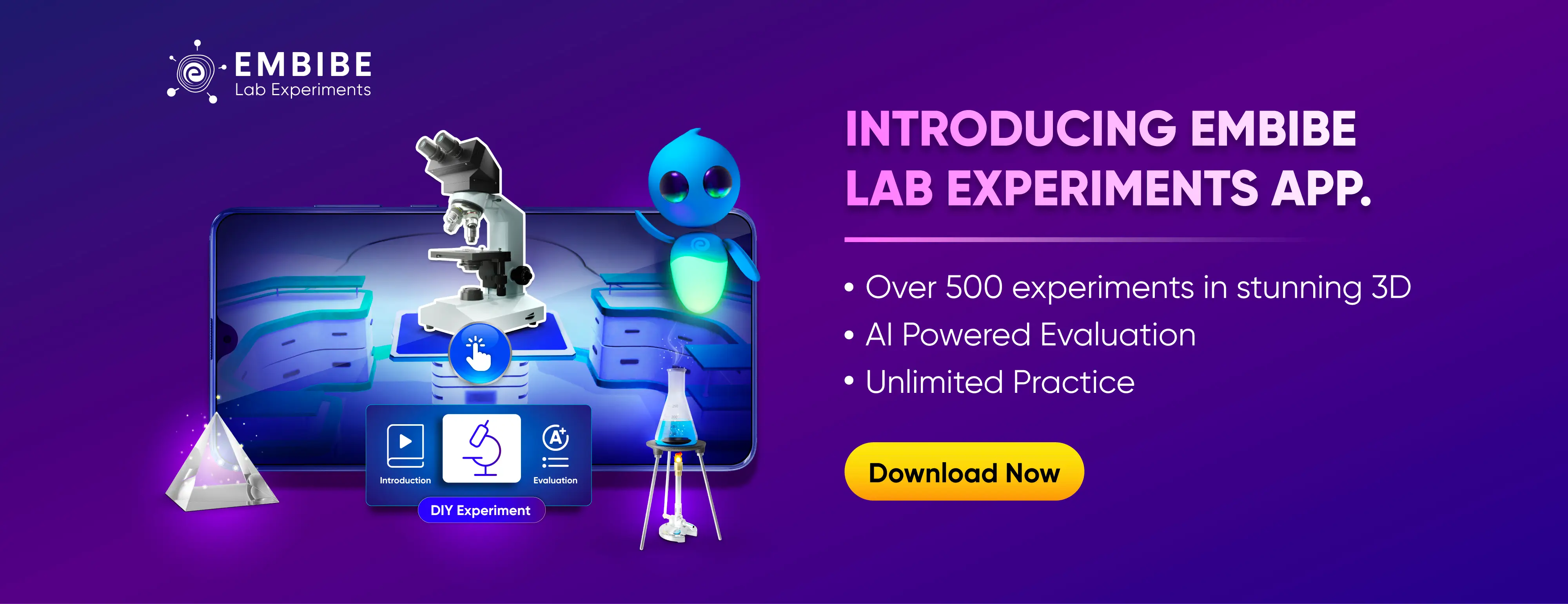What are Aldehydes and Ketones? Aldehydes and ketones are organic compounds that incorporate a carbonyl functional group, C=O. The carbonyl carbon atom of this group...
Aldehydes & Ketones: Virtual Lab Experiment
March 14, 2024
How are Images formed by a Convex Lens?
A convex lens bulges outward and is thicker in the middle and thinner at the upper and lower edges. A convex lens forms images through the refraction of light passing through it. When refracted through a convex lens, the light rays obey the laws of refraction. A convex lens converges the light rays parallel to the principal axis towards the focal point, as shown in the figure below:
Hence convex lenses are called converging lenses.
Light rays passing through the edges of a convex lens are bent most, whereas light passing through the lens’s centre remains straight.
The formation of images by a convex lens can be studied by drawing ray diagrams using the New Cartesian Sign Convention. A convex lens forms either a real or virtual image. It depends on how close the object is to the lens relative to the focus.

Case1: A real, inverted image will be formed for an object outside the focal point.
Case 2: For an object inside the focal point, a virtual erect image will be formed.
Convex lenses are the only lenses that can form real images. Unlike a virtual image, a real image appears where the light converges.
Diagram – Image Formed by a Convex Lens for Object Between F and 2F
When the object is placed at a distance less than 2f but more than f from the optical centre of the convex lens, we obtain a real, inverted and enlarged image on the screen.
The image’s nature, position, and size can be noted and measured from the optical centre O of the thin convex lens, as shown in the figure below:
For drawing ray diagrams, only two rays are considered for clarity. The intersection of at least two refracted rays gives the position of the image of the point object. Any two of the following rays can be considered for locating the image:
Rule 1: An incident ray travelling parallel to the principal axis after refraction through the convex lens passes through the focal point on the other side.
Rule 2: An incident ray passing through the first principal focus of a convex lens emerges parallel to the principal axis after refraction.
Rule 3: A ray of light, passing through the optical centre of the lens, emerges without any deviation after refraction.
Optical instruments like microscopes, projectors, cameras, magnifying glasses, eyeglasses, etc use convex lenses.

Experiment Title – Image of an Object Between F and 2F of Convex Lens
Experiment Description – The image of an object formed by a convex lens can either be real or virtual. Let’s understand the nature of the image formed by this lens when the object is placed between f and 2f.
Aim of Experiment – To study the formation of an image of a lighted candle by a convex lens when the candle is placed at a distance less than 2F but more than F from the optical centre of the convex lens.
Material Required –
A thin convex lens
A lens holder (or a stand)
A piece of rice paper (or a semi-transparent sheet) screen fixed to a stand
A metre scale (or a ruler)
A small candle with a stand
A matchbox
Procedure –
Precautions –
• For obtaining distinct and sharp images of the candle flame, the experiment must be performed in a dark room or at least in a shade where no direct light reaches the working table.
• The flame of the candle should be uniform throughout the experiment. To avoid flickering, experiment with calm air and switch off the fan.
• While finding out the approximate value of the focal length f of the convex lens by using sunlight, do not look at the image directly with the naked eye; otherwise, it might damage your eyes.
• A thin convex lens of high-quality transparent glass with a small aperture should be used to experiment to obtain a clear image.
• The eye should be placed at a distance of at least 25 cm from the image formed by the convex lens on the screen.
• The focal length of the thin convex lens must preferably be between 15 to 20 cm.
• The bases of the stands of the convex lens and screen should be parallel to the measuring scale.

Ans. This is the correct statement. When an object is placed between F and 2F of a convex lens, its enlarged, inverted, and real image is formed beyond 2F on the other side of the lens. So, for this, we need to place the object between 20cm and 40cm of the lens.
Ans. Convex lenses are used in telescopes, microscopes, and projectors.
Ans. A Convex lens can form either real or virtual images depending on the object’s position.
Ans. Since magnification is negative, the image formed is inverted and real. Also, it is enlarged and three times the size of the object.
Ans. When we cover one-half of the convex lens, say with black paper, an image will be formed as in the case of the normal lens; only the brightness or intensity of the light will be diminished due to the covering of black paper.